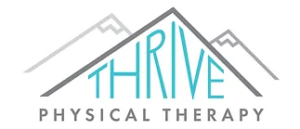3 Common Knee Injuries from Running and How to Prevent Them
Let’s be honest, most recreational runners will experience some sort of injury in their running career. If you are not among this group, consider yourself lucky! In fact, Yale Medicine estimates that 50% of “regular runners” will experience some sort of injury annually. Unfortunately, knee injuries are among the most common in runners. While some common knee injuries from running are related to a specific trauma, like a fall, most are related to overuse.
The most common knee injuries from running include runner’s knee, iliotibial band (ITB) syndrome, and patellar tendonitis. While each of these issues presents with different symptoms, they are generally all related to the same root cause, overloaded tissue.
- “Runner’s knee”, also known as patellofemoral pain syndrome, is generally characterized as pain under or around the knee cap. Some people do report the pain improves while running but it is typically painful on hills and often after running. Most people also experience pain when squatting or going up and down the stairs.
- ITB syndrome is one of the most common knee injuries from running and is associated with pain on the outside of the knee during or after running. Some people with ITB syndrome will feel pain all the way up to the outside of the hip. Occasionally clients will report clicking and popping due to inflammation of the tendon.
- Patellar tendonitis typically causes pain below the knee cap. Some runners experience this pain when getting up from sitting. Often the pain improves once the tissue is warmed up but returns later in the run as the tissue becomes more overloaded and less tolerant of impact.
When clients see me in the clinic with any of these common knee injuries from running, the root cause is often what I call, “TOO syndrome”. Running TOO many days per week, increasing mileage TOO quickly, running TOO fast and doing TOO little strength and mobility work. Any combination of these TOOs can really pile on the stress and create overload of the affected soft tissue.
Years ago, I attended a conference with a well-respected expert in the field of sports physiotherapy and I will never forget him saying, “People run to get in shape, but they should get in shape to run.” That message has always resonated with me, and this is one philosophy that I continue to reinforce with my running clients. Strength, muscle balance, mobility, coordination, and timing are among the best strategies to avoid most overuse running injuries. While runners typically understand that improving strength is an important part of a well-balanced training program, most runners, admittedly, don’t prioritize consistent strengthening. Each runner has a specific set of needs to reduce their risk of injury or address a current injury. However, generally more attention should be paid to single leg strengthening activities such as Bulgarian split squats, lunges, single leg squats, lateral lunges, single leg Romanian deadlifts, and step ups. Acknowledging and addressing leg asymmetry can really help to improve the efficient shock absorption required for successful injury-free running. Simply adding the proper pair of running shoes to this recipe for success, most runners could avoid or significantly reduce their risk of overuse related injuries.
Most common knee injuries from running will be resolved with a short period of activity modification or rest. Other tools may include anti-inflammatory medications, ice, stretching, soft tissue mobilization (foam roller, percussion massager, cupping) and patience. Unfortunately, some issues linger despite our best efforts. If your injury does not respond to basic conservative management, it is likely time for professional assistance. Seeking the care of a physiotherapist that is trained in running gait analysis, strength and functional mobility testing, as well as foot biomechanics would be an ideal place to start. If there is something more concerning that could require additional medical management, a skilled clinician can also help guide you in the right direction! Keep in mind that in North Carolina, we have “Direct Access” allowing you to access physiotherapy without a physician referral. Your physiotherapist can also make suggestions regarding running shoes that may be appropriate to get you back out there and doing the thing you love. Remember, while physiotherapists are uniquely qualified to help you recover from an injury, we’d rather help you prevent one! We are here to get you and keep you run-ready!

About the Author
Thrive Physical Therapy is proud to be part of the local running community for over 9 years. Owner, Dr. Erin Blankenship, PT, DPT, OCS, CSCS, is a runner herself and competed in both track and cross country in high school and college. While now considering herself a recreational runner, she loves helping runners of all levels continue to train successfully and to actively address any issues that may arise. She specializes in slow motion running gait analysis and has a particular interest in foot biomechanics that can often lead to issues elsewhere in a runner’s form. She utilizes many techniques including Trigger Point Dry Needling, instrument assisted soft tissue mobilization (IASTM) and Postural Restoration to address body imbalances. Dr. Erin is also a certified running coach, a certified strength and conditioning specialist (CSCS) and enjoys using those tools to help all types of athletes achieve their goals. Online scheduling is available. 
Be sure to checkout the MEDICAL CORNER of our site for more resources surrounding injury prevention for runners. We’re fortunate to partner with some of the best medical professionals in the area and they’ve been kind enough to share their knowledge and expertise as it relates to running. Here you’ll find similar articles to Common Knee Injuries from Running.

